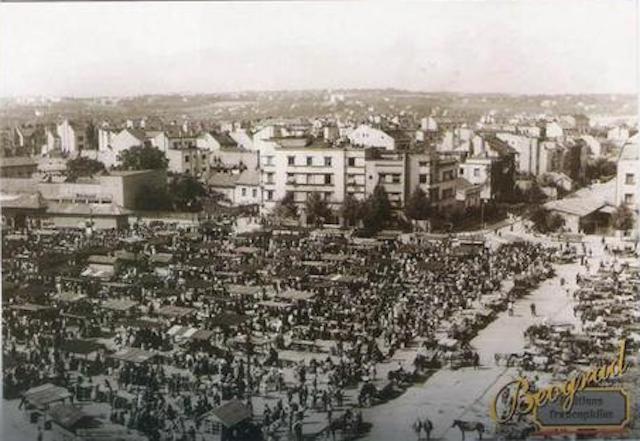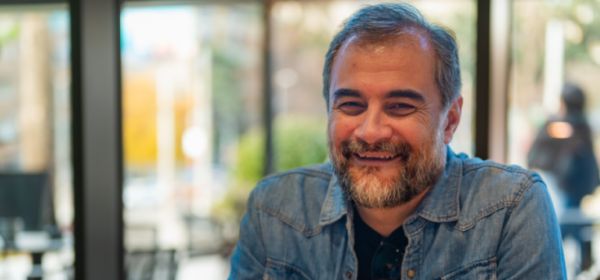.jpg)
Photo: Pavle Kaplanec
The first Belgrade marketplaces
The story of Belgrade’s marketplaces begins in 1824 when the St. Andrew’s marketplace was founded in Student square, soon to be dubbed ‘Velika pijaca’ (the Big Marketplace) by the people. As per agreement between the Serbs and Turks, anyone could bring their products here to sell to an interested party. There was cheese, meat, fish, dried fruits, wheat, poultry but also many household necessities. When Turks left Belgrade, architect and a professor at the Great School Emillian Joksimovic suggested in 1887 that the marketplace be moved, but that suggestion wasn’t fully acknowledged. The marketplace was reduced and the authorities built the University park around it.
In addition to St. Andrew’s marketplace, the Society for Vracar design opened a market in Cvetni square and in Zemun there was the “Zitna” (wheat) marketplace where wheat was delivered in horse-pulled carts, but you could also find watermelons and grapes from Stari Slankamen, cabbage from the fields in Lido, “mileram” butter and the so called “German cheese” that arrived from Austria-Hungary. If you went a little further down by the river, you could buy fresh fish from the fishermen of Danube.
 Photo: Branibor Debeljkovic - Zeleni venac marketplace
Photo: Branibor Debeljkovic - Zeleni venac marketplace
The big cleanup between two wars.
After the St. Andrew’s marketplace closed down in 1926, new marketplaces were opened for the needs of the increasing population of the Serbian capitol city. They were founded in Dusanovac, Vozdovac, Karaburma, Smederevski djeram. There was also the Cvetko marketplace, Jovan’s marketplace in Dorcol, the “Zeleni venac” marketplace, Bajloni and Kalenic. The marketplaces were usually named after the part of the city where they were located, or the person who founded them. Many became symbols of Belgrade where to this day people meet, trade, talk and exchange ideas from all sorts of life – artists, professors, painters, cooks, shoppers, florists, fishermen. These marketplaces have, in addition to their original purpose, become symbols of their neighborhoods and found their place in songs, novels, paintings, became a regular in biographies of notable Belgraders, marked on every tourist’s map. Their carnival atmosphere, children’s laughter, the crowd murmurs and diverse colors and smells, stands selling fruits, vegetables, home-made pastries, honey...it all entices and invites. The princesses among Belgrade’s marketplaces are the Kalenic and Bajloni.
The princesses and the queen of Belgrade marketplaces
Kalenic marketplace located between the Maksima Gorkog and Njegoseva streets was constructed on the property of the shoemaker, economist and benefactor Vlajko Kalenic who in 1907 left his property to the city. In addition to stands with various ready-made, national and international food, fresh fruits and veggies, there is also a separate dairy marketplace, as well as florists, confectioners, some trade masters and salespeople offering various goods. Nearby there is also the “Kalenic” tavern, an unavoidable meeting place for journalists, poems, bohemians and all those who love good national cuisine.
 Photo: Blic - Kalenic marketplace 1926
Photo: Blic - Kalenic marketplace 1926
The marketplace Bajloni in Stari Grad was founded in 1927 by the Czech Ignjat Bajloni who with his wife and four sons came to Serbia in 1855. As a ‘to measure’ marketplace, it worked until after WWII and after the occupation ended it became a green marketplace under the name “Skadarlija”. However, as it usually goes, the marketplaces end up with whatever name the people want to call it, so this one too ended up known as Bajloni marketplace. At one point the “Ignjat Bajloni and sons” as well as “Saran” taverns were located here, where salespeople from the marketplace were known to spend their entire daily earnings.
Which of the Belgrade marketplaces is the “queen”? Where the marketplace Zeleni venac is today there used to be a trademeet in 1847, which was then turned into a fiacre station. In 1926 modern selling stands were set up and the space was cleaned up and arranged which delighted the buyers who – thrilled by the size, good organization and offer – named it the ‘queen’ of Belgrade’s marketplaces. This marketplace keeps its title to this day. After a reconstruction that finished in 2007 and with an unusual architectural solution, the Zeleni venac marketplace was declared a national monument and placed under the protection of the state.




 17 ℃
17 ℃




